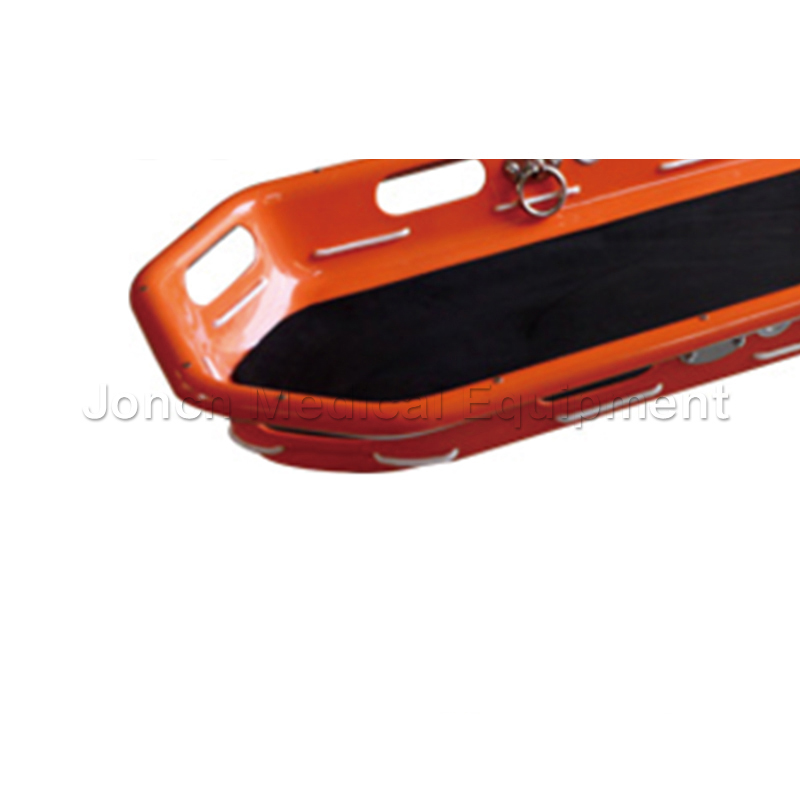
In emergency medical rescue, time is life. In helicopter rescue, whether patients can be transferred to the hospital safely and effectively is directly related to their chances of survival. As a key piece of equipment in the rescue process, the helicopter stretcher must be designed with extreme flexibility to accommodate patients of different sizes and weights.
Adjustable design: a versatile key
Modern helicopter stretchers are usually designed with adjustable designs. Many helicopter stretchers are equipped with retractable brackets and strap systems that can be adjusted according to the patient's body size. For example, the length and width of the helicopter stretcher can be adjusted to different body sizes to ensure that the patient remains comfortable during the transfer. Studies have shown that this flexibility not only improves patient safety, but also reduces additional pain caused by discomfort.
Balanced load: Make every patient important
In helicopter rescue, patients have different weights and sizes, and the load-bearing capacity of the helicopter stretcher is an important factor in ensuring flight safety. Most helicopter stretchers are designed with a balanced load function to ensure that the stability of the flight is not affected when carrying heavy patients. For example, some helicopter stretchers are made of aluminum alloy, which has the characteristics of high strength and lightness, and can withstand a weight of more than 250 kg without losing structural integrity.

Safety fixation system: protect every passenger
No matter what the patient's body size is, safety is always the primary consideration. Modern helicopter stretchers are usually equipped with advanced fixation systems, including multi-point straps and safety buckles to ensure the stability of patients during flight. Studies have shown that well-fixed patients have a significantly reduced risk of accidents during flight. In addition, some helicopter stretchers are also equipped with anti-slip pads to further improve patient safety.
In helicopter rescue, the design of the helicopter stretcher is not only related to the comfort and safety of the patient, but also directly affects the efficiency of the rescue. With the continuous advancement of technology, the future helicopter stretcher will be more intelligent and may be combined with sensor technology to monitor the patient's vital signs in real time to ensure the best care during the transfer process. Regardless of the patient's size and weight, the helicopter stretcher will always be a solid backing for life rescue.

OBT-B07adjustable movable overbed dining table, designedfor both hospital and home use. With dimensions of 800400725/965mm, this versatile table is equipped with a dining plate and four sturdy casters...
See Details
Our ABS hospital bedside cabinet lockers with wheel, are the ideal storage solution for medical facilities. Measuring 470*465*800mm, these cabinets are designed to maximize space and convenience. Each...
See Details
Removable and washable quad-folding foam mattress, designed for both hospital and home use. Measuring 1925*900*100mm (custom sizes available), this mattress features a high-density polyurethane foam c...
See Details
The advanced ABS plastic hospital anaesthesia trolley, is meticulously designed to meet the rigorous demands of modern medical facilities. Crafted from durable ABS and antibacterial materials, this tr...
See Details
This humanized design emergency trolley is ergonomically designed to provide a comfortable hold even in emergencies. Buttons on the handles make it easy to lock or unlock the wheels, allowing the stro...
See Details
Our emergency medical carts are designed with ergonomics in mind to ensure medical personnel can easily and quickly access and operate the medical supplies on the cart in stressful work environments. ...
See DetailsIf you are interested in our products, please consult us
Products
Mobile terminal